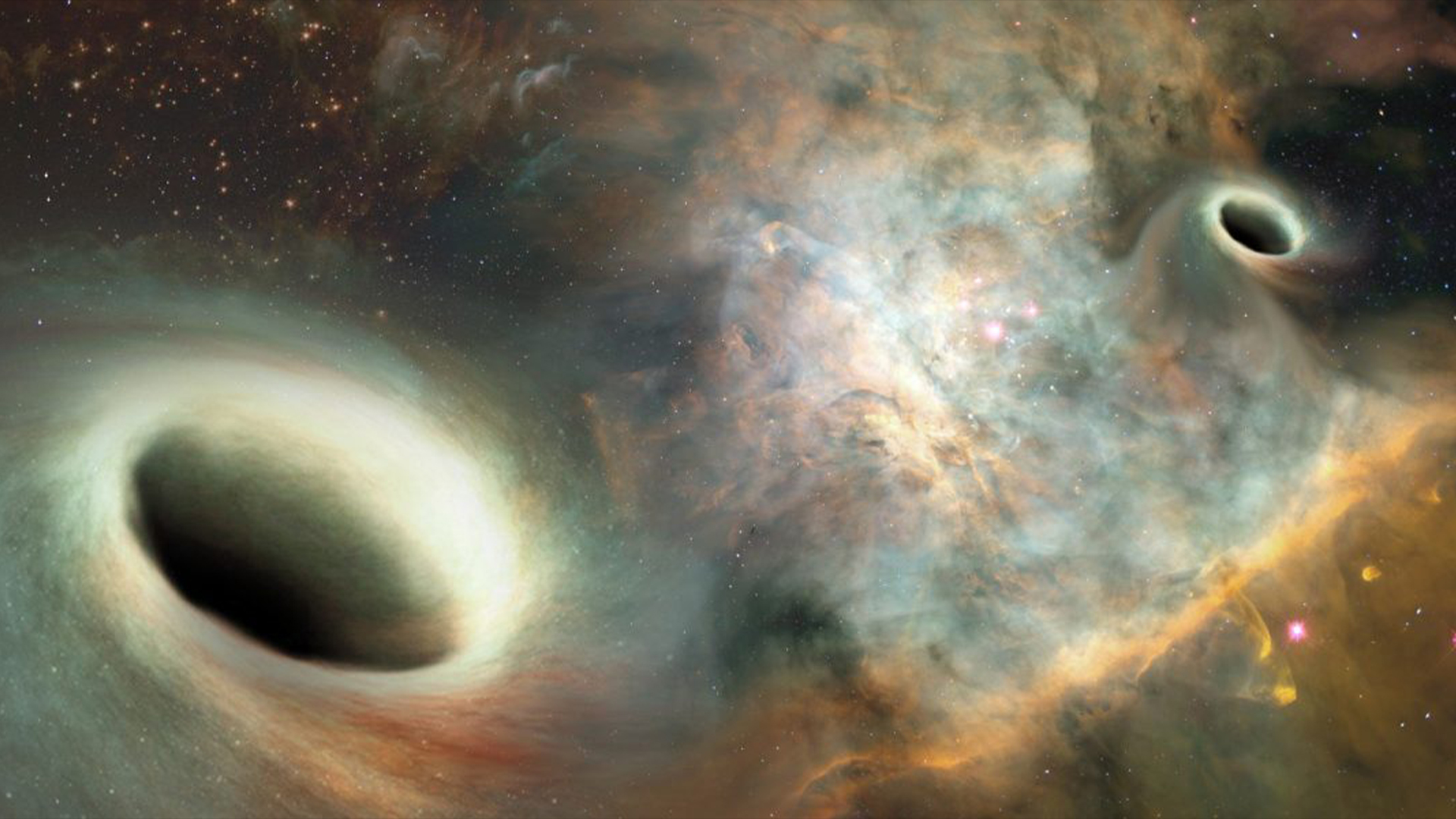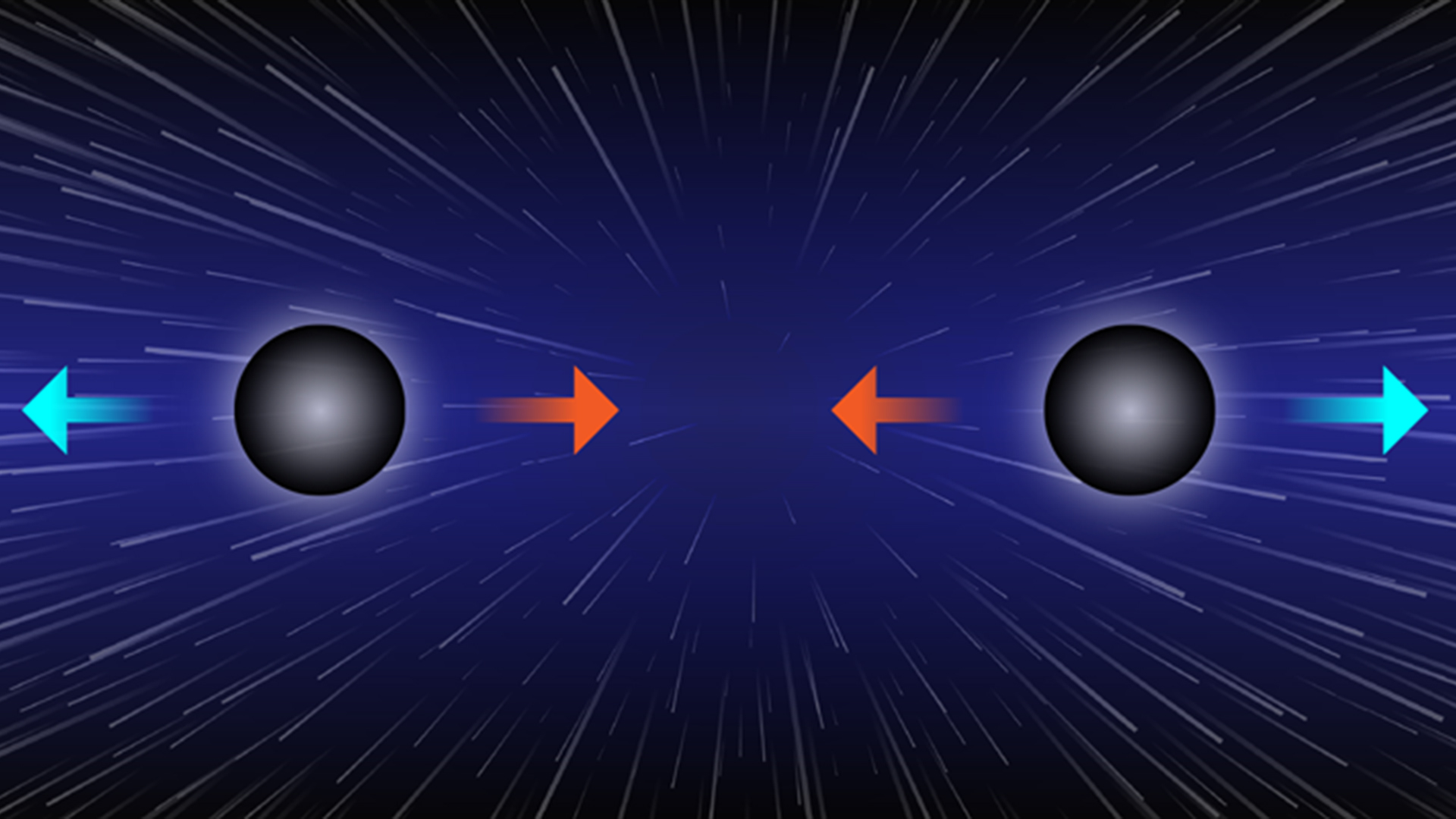Scientists found a way for two black holes to orbit each other forever without colliding
Contrary to conventional wisdom, a pair of black holes could exist in perfect pairs without leading to a cataclysmic merger, new research suggests. All it takes is a dose of cosmic expansion.

Astronomers have long assumed that two black holes that circle close to each other are always destined to become one in a cataclysmic merger that spans eons.
That needn't always be the case, new research finds.
In a new study, physicists found that it is theoretically possible for two black holes to remain at a fixed distance from each other, thanks to their mutual gravitational pull being perfectly counterbalanced by the speed at which the universe is expanding.
"Viewed from a distance, a pair of black holes whose attraction is offset by cosmic expansion would look like a single black hole," study co-author Óscar Dias, a physicist at the University of Southampton in the U.K., said in a statement. "It might be hard to detect whether it is a single black hole or a pair of them."
Related: Newly discovered black hole 'speed limit' hints at new laws of physics
The team reported their findings Sept. 25 in the journal Physical Review Letters. They demonstrate that two black holes could be delicately balanced, despite conventional theories predicting otherwise, by pointing out "a logical inconsistency in the proof of one theorem and a limiting assumption in another," Toby Wiseman, a professor of theoretical physics at Imperial College London who was not involved with the new work, said in a different statement.
One of the key assumptions in those theorems is that the region around black hole pairs is empty. However, according to the standard model of cosmology — our current best description of the universe — dark energy causes the universe to expand at an accelerated rate. This dark energy is sometimes considered equivalent to the puzzling cosmological constant in the theory of general relativity.
Get the world’s most fascinating discoveries delivered straight to your inbox.
In the new study, Días and colleagues show that two black holes can be positioned such that their mutual gravitational attraction is offset by acceleration due to the cosmological constant. "If these black holes are set up in precisely the correct way, they sit in an unstable equilibrium, akin to a pen balanced on its pointed end," Wiseman said. "Any disturbance will ruin this perfect balance."
Physicists say that wobbly balance could be made more stable when black holes are rotating. For instance, the gravitational attraction of two such identical black holes rotating in opposite directions could be balanced by their spins, although this possibility is yet to be proved.
The study only considered a pair of static black holes, so follow-up studies should address how stable spinning black holes could be.
"Our theory is proven for a pair of static black holes, but we believe it could be applied to spinning ones too," said study co-author Jorge Santos, a professor of theoretical physics at the University of Cambridge in England. "Also, it seems plausible that our solution could hold true for three or even four black holes, opening up a whole range of possibilities."

Sharmila Kuthunur is an independent space journalist based in Bengaluru, India. Her work has also appeared in Scientific American, Science, Astronomy and Space.com, among other publications. She holds a master's degree in journalism from Northeastern University in Boston. Follow her on BlueSky @skuthunur.bsky.social



